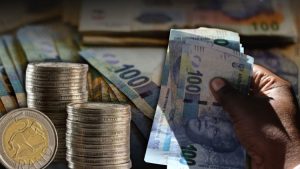National Treasury says the drawdown from the country’s Gold and Foreign Exchange Contingency Reserves (GFECRA) will reduce government’s debt service costs by R30 billion in the medium term. It says it is confident that there are sufficient safeguards that the drawdown will not have negative consequences.
This after Finance Minister Enoch Godongwana announced that government intended to draw down R150 billion from the reserves to reduce debt service costs.
Treasury was briefing Parliament’s Standing Committee on Appropriations about the three money bills emanating from the Budget Speech.
Debt service costs absorb more than 20% of the budget. GFECRA has a balance of more than R500 billion. National Treasury says to prevent risks, the Gold Exchange Reserves will have a buffer of R250 billion while the sub–Contingency Reserves will have a buffer of R100 billion.
“We will not dig into the country’s reserves in order to release funds for use by government. For us the two main principles is to ensure that we honour obligations should this account ever be in a deficit and this legislation allows for us to do that. And secondly that we leave sufficient funds in the buffer, the contingency buffer to ensure that should there be any negative in the GEFECRA the second line of defence for the SARB is the contingency reserve account which will then provide that protection against any currency volatility,” says Mmakgoshi Phetla-Lekhethe, DDG: National Treasury.
Reduce debt service
According to National Treasury, tapping into the reserves will reduce debt service costs which stand at R356 billion.
“Off course these funds we’ve proposed that once they reach the National Revenue Fund, they are used to reduce the government borrowing, therefore R150 billion will be used. As a result we expect that this will reduce debt service costs by about R30 billion over the medium term and this will be accompanied by a reduction in the stock of debt,” Phetla-Lekhethe adds.
The downside is that the drawdown will cost R30 billion in the medium term.
“Regarding the costs the Reserve Bank will basically fund the disbursement to National Treasury through the use of excess bank reserves. That excess bank reserves the SARB will begin paying the repo rate on that, that is at the moment 8.25% on that and that translates into the cost on the GEFECRA. But those costs won’t be paid directly as part of government debt service costs that will be covered by the contingency reserve buffer, the R100 billion as per the current proposed arrangement,” says Wessel Moolman, Director: National Treasury.
National Treasury has appealed to the committee to swiftly process the Gold and Foreign Exchange Contingency Reserve Account Defrayal Amendment Bill.
“We have apportioned the resources that will be coming from the account towards reducing government’s borrowing requirements for the next financial year. So it’s quite important for us to quite be able to do that in order to provide certainty to our lenders and the market in particular in terms of how the government’s borrowing requirements will look like,” Phetla-Lekhethe explains.
The three money bills are expected to be debated and voted on in the National Assembly at the end of next month.
Budget 2024 | Govt outlines plans to prevent risk of tapping into reserves to address debt:






